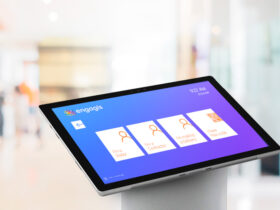Surveying your employees can be a great way to find problems in your company and take proactive steps to fix those problems. However, actually doing the survey can be more difficult than it seems. With these six simple steps, it will be easy for you to write and distribute an employee survey.
1. Decide on Your Goal
The first step is to figure out your goal in creating this employee survey. Maybe you’re hoping to increase the quality of your customer service, reduce average turnover, or help employees with the shift to working from home. No matter the goal, having it in mind from the beginning will help direct your survey overall.
2. Choose a Survey Method
The two most common survey methods are phone calls and digital surveys. Phone surveys allow you to maximize response rate, as your employees are unlikely to ignore phone calls from managers, and allow you to ask follow-up questions and request clarification. However, digital surveys ensure anonymity, are easier to send out, and require less hands-on work from managers.
3. Write the Survey Questions Appropriately
There are two types of survey questions: open-ended questions and closed-ended questions. Closed-ended questions will typically be the majority of questions in a survey. These questions have a list of choices for respondents to choose from. It might be helpful to include one or two open-ended questions, which are free-form responses, at the end of the survey to collect general information.
4. Test Your Survey Before Sending It Out
Before you send out a survey to the entirety of your employee base, it’s a good idea to take a couple minutes to test the survey and make sure it’s easy to understand. Set up a phone or video call with one or two of your employees and have them go through the survey, letting you know if they have any questions or concerns regarding the survey questions.
5. Carry out the Employee Survey
Once you’re certain that the survey is easy to understand and effective at collecting information, you can actually carry out the survey. Send out the survey via email or call employees over a period of time. It may also be helpful to send out an email explaining why your company is doing the survey, so employees are more likely to respond.
6. Review Your Survey Results and Implement Needs
Remember, you’re doing the survey for a reason. Implementing certain things that your employees are asking for is a great way to make sure employees know that management actually cares about them. Try to implement as many relatively small and simple requests as possible, then focus on larger requests throughout the coming months.
Conclusion
Employee surveys can significantly help management understand more about their employees’ needs. When you do an employee survey, you can respond to real problems rather than potentially imagined problems that company management may have thought was a significant issue. Use these steps to make sure your employee survey goes off without a hitch.
A Step-By-Step Guide to an Employee Survey













